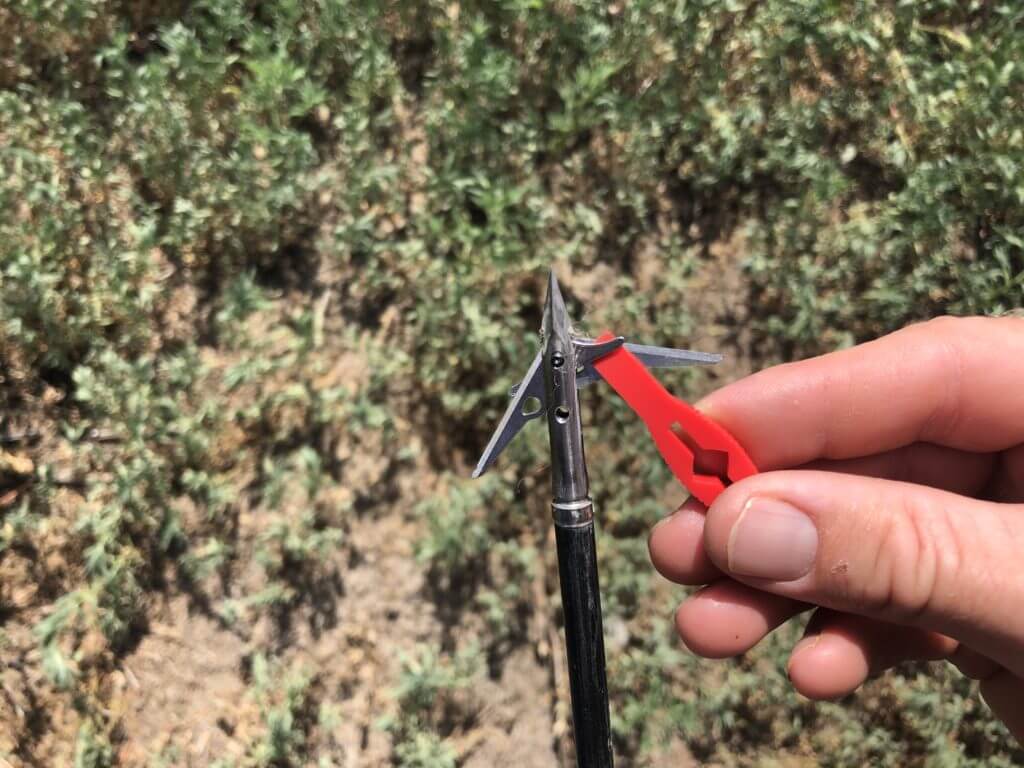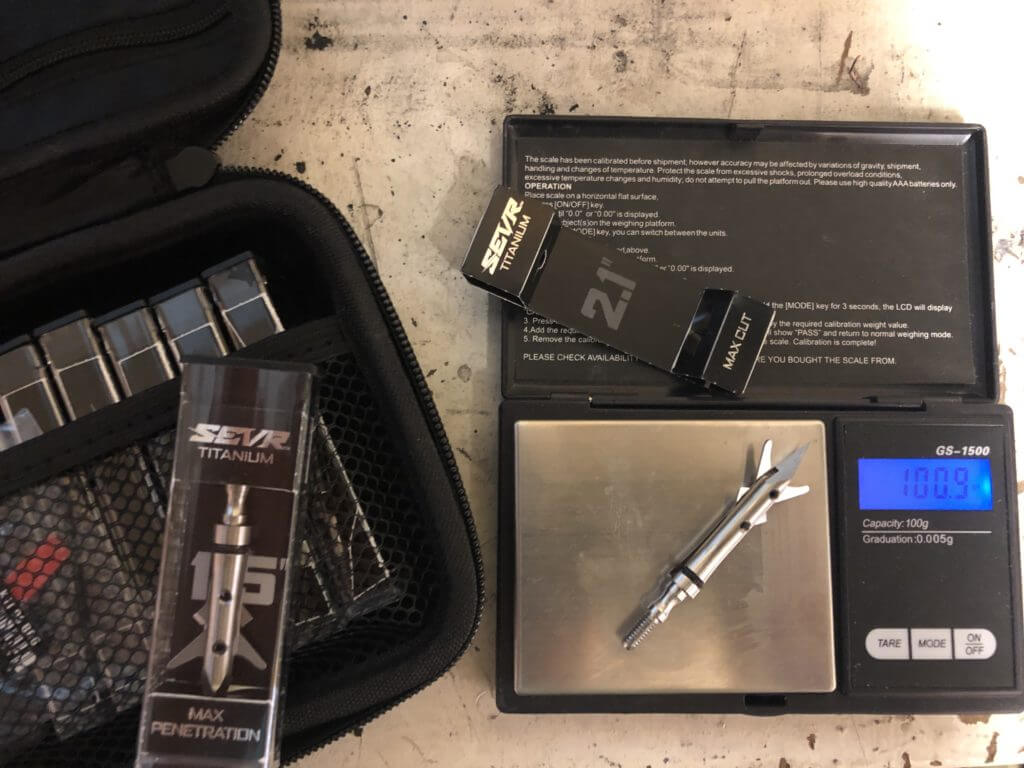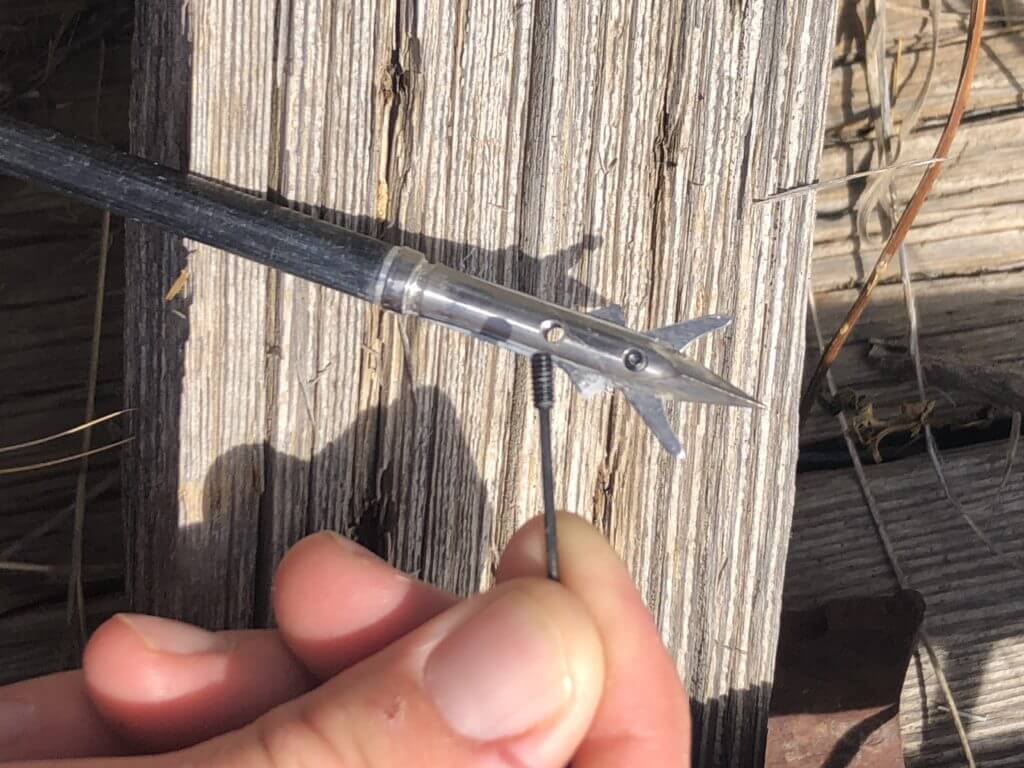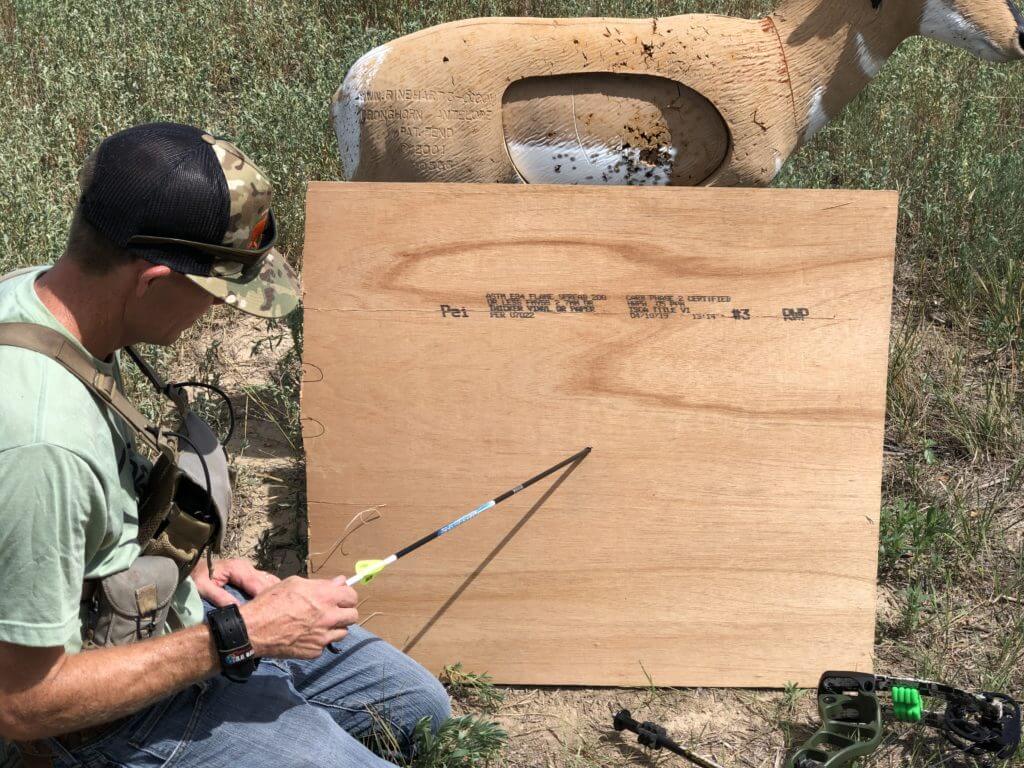
The broadhead market is a saturated one, and in recent years, manufacturers in this arena have seen sink-or-swim times. Why? Bowhunters are very particular about what head they thread into their arrow. Yes, we are a crowd that likes to tinker and test — always on the prowl for something that will provide an advantage. However, if a product proves unworthy, we are quick to discard it.
I’m always a bit skeptical when a new broadhead arrives on my doorstep for testing. Though I loved the packaging — a branded SEVR box lined with a dozen Titanium 2.1 heads contained in individual plastic totes — these heads had a lot to prove to live up to the hype surrounding them.
Pulling one from its plastic home, I was pleased with the shape and needlepoint sharpness of head. I appreciated the deep recessed O-ring grove and the elasticity and thickness of the ring. With the blades contained inside the ferrule, the broadhead appeared sleek and streamlined. Removing the O-ring (extra rings included with each head), I used my fingers to swing the Lock-and-Pivot Blades into position. The blades slid out of the ferrule smoothly and then locked into place. Once locked, the blades pivot left or right. Make no mistake, this design was on purpose. SEVR engineers wanted a blade design that would pivot around bone and the like and keep the arrow driving straight through game. The blades appeared sharp and shaved hair off the arm. The locked blades, using the included red-tab tool, unlocked easily and returned into the ferrule without a struggle. So far so good.

Available in 100- and 125-grain options, I opted for the 100-grain models for testing. The average weight of three separately weighed heads was 100.9 grains. The Grade 5 Titanium billet-machined head threaded easily into arrow shafts. No snags or threading issues were had. The spin test was perfect. Zero wobble on any of the tested dozen heads.

Noted by SEVR to be field-point accurate, I was excited to test the heads out to 100 yards with both my Prime Logic CT5 (29-inch draw; 65-pound draw weight) and Spot Hogg’s Hooter Shooter shooting machine. Before we dive into accuracy, however, I want to brag on what is perhaps my favorite feature of SEVR’s design — Practice Lock Practice Mode. Archery is a game of precision, and I like to shoot the actual broadheads I will be hunting with. Not the practice heads that come with most mechanicals — the actual broadheads. This gets expensive and is just a pain. SEVR’s design, however, allows for the insertion of small set screw (a wrench is included) into the ferrule. This set screw keeps the blades from deploying on impact and allows the shooter to practice with the actual heads he/she will be hunting with. When practice is over and it’s time to go get meat, simply remove the screw.

Powered by Prime’s Logic CT5 and guided by Easton’s HyperSpeed Pro carbon shafts (400-spine; 388-grains finished weight), the SEVR’s lived up to their accuracy hype. The heads hit consistently with field points from 20 to 100 yards, and when shot with Spot Hogg’s Hooter Shooter at a distance of 90 yards, cut vanes off arrow shafts. Wind speed during offhand shooting and through the Hooter Shooter was a 5-8 mph crosswind. These heads fly like darts, and the more I shot them, the more my confidence grew. All 12 heads were shot, and though I did have to index a single arrow (rotate the nock counterclockwise), all arrow/broadhead combos found their mark.

Wanting to test both durability and penetration, I fired shafts at bowhunting distances (10-60 yards) into ¼-inch thick plywood at quartering-toward and quartering-away angles as well as straight on. Blade deployment was never a problem, and not once, even when shot at severe quartering angles, did I experience blade deflection. Credit this to the pivoting blade design on this rear-deploying broadhead.

As for durability, I don’t get overly hung up on it. I only shoot a broadhead once at an animal. When it comes to durability, I simply want a head that doesn’t explode on impact or crush like a tin can when it hits bone and the like. The Titanium design no doubt boosts strength, but I was also impressed with how the .032-inch thick blades held up to the plywood abuse. No chips or bends and the needle-point head didn’t fold over or become dull.
The SEVR Titanium 2.1 will be in my quiver in the coming weeks and months. My plan is to use the head for pronghorn and whitetails this season. I will be sure to report my findings, but if this head hunts anything like it tests, I expect a full freezer.
SEVR heads can only be purchased online at sevrbroadheads.com. The price is $13.99 per head, and there is no limit to how many or how few you can purchase. You will also find, upon visiting SEVR’s website, that the manufacturer offers multiple deals and incentives when you order seven or more heads.
SEVR has also added some new members to its lineup — the Titanium 1.5 and AP 1.7. The Titanium 1.5 features a more swept-back blade angle than the 2.1, making it ideal for the thick-skinned, heavy-boned game. It will be my go-to for elk. The AP 1.7 was constructed with a 7075-alloy ferrule and an intermediate cut diameter and blade angle. All broadheads were designed for use with today’s fastest compounds and crossbows. Replaceable blades are also available for all broadhead models.